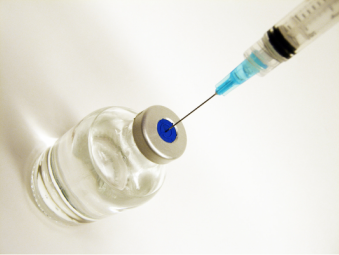Biol Trace Elem Res. 2000 Winter;78(1-3):131-47.
Trace element distribution in heart tissue sections studied by nuclear microscopy is changed in Coxsackie virus B3 myocarditis in methyl mercury-exposed mice.
* Ilback NG, * Lindh U, * Wesslen L, *Fohlman J, * Friman G.
Toxicology Division, National Food Administration, Uppsala, Sweden.
Methyl mercury (MeHg) has been shown to change Coxsackie virus type B3 (CB3) myocarditis in a direction compatible with the development of chronic disease. Murine models of CB3 myocarditis closely mimic the pathogenesis in humans. There are also indications that metals, such as mercury, and trace elements may interact and adversely affect viral replication and development of inflammatory lesions. The effects of low-dose MeHg exposure on myocardial trace element distribution, as determined by means of nuclear microscopy, was studied in CB3 myocarditis. Balb/c mice were fed a MeHg-containing diet (3.9 mg/kg diet) for 12 wk prior to infection. Areas of inflammatory lesions in the myocardium were identified by traditional histologic examination, and serial tissue sections in these selected areas were used for immune histology (macrophages), in situ hybridization of virus genomes, and nuclear microscopy of tissue trace element distribution. Areas with no inflammation or virus were compared with areas of ongoing inflammation and viral replication. In the inflammatory lesions of MeHg-exposed mice as compared to nonexposed mice, the myocardial contents of calcium (Ca),manganese (Mn), and iron (Fe) were significantly increased, whereas the zinc (Zn) content was decreased. The increased Ca and decreased Zn contents in the inflamed heart may partly explain a more severe disease in MeHg-exposed individuals. Although not significant in the present study, with a limited number of mice, the inflammatory and necrotic lesions in the ventricular myocardium on d 7 of the infection was increased by 50% (from 2.2% to 3.3% of the tissue section area) in MeHg-exposed mice and, also, there was a tendency of increased persistence of virus with MeHg exposure. No increased MeHg uptake, either in the inflammatory lesions or in the areas of noninflamed heart tissue in infected mice, could be detected. The present results indicate that a "competition" exists between potentially toxic heavy metals from the environment/diet and important trace elements in the body and that a disturbed trace element balance adversely influences the development of pathophysiologic changes in inflammatory heart disease.
PMID: 11314973 [PubMed - indexed for MEDLINE
Drum DA.
Biometals. 2009 Oct;22(5):697-700. Epub 2009 Feb 11.
<http://www.springerlink.com/content/7k502300609t72v4/>http://www.springerlink.com/content/7k502300609t72v4/
Cadmium, arsenic, lead, and mercury have been linked to autism, attention deficit disorder, mental retardation and death of children. Mercury in thimerosal found in many vaccines and flu shots contributes significantly to these problems. Decomposition of the thimerosal can produce more toxic compounds, either methylethylmercury or diethylmercury, in the body. These compounds have a toxicity level similar to dimethylmercury. Within the human body, a mitochondrial disorder may release the more toxic form of mercury internally. Young children and pregnant women must minimize internal exposure to the vaccines and flu shots containing mercury.
PMID: 19205900
Trace element distribution in heart tissue sections studied by nuclear microscopy is changed in Coxsackie virus B3 myocarditis in methyl mercury-exposed mice.
* Ilback NG, * Lindh U, * Wesslen L, *Fohlman J, * Friman G.
Toxicology Division, National Food Administration, Uppsala, Sweden.
Methyl mercury (MeHg) has been shown to change Coxsackie virus type B3 (CB3) myocarditis in a direction compatible with the development of chronic disease. Murine models of CB3 myocarditis closely mimic the pathogenesis in humans. There are also indications that metals, such as mercury, and trace elements may interact and adversely affect viral replication and development of inflammatory lesions. The effects of low-dose MeHg exposure on myocardial trace element distribution, as determined by means of nuclear microscopy, was studied in CB3 myocarditis. Balb/c mice were fed a MeHg-containing diet (3.9 mg/kg diet) for 12 wk prior to infection. Areas of inflammatory lesions in the myocardium were identified by traditional histologic examination, and serial tissue sections in these selected areas were used for immune histology (macrophages), in situ hybridization of virus genomes, and nuclear microscopy of tissue trace element distribution. Areas with no inflammation or virus were compared with areas of ongoing inflammation and viral replication. In the inflammatory lesions of MeHg-exposed mice as compared to nonexposed mice, the myocardial contents of calcium (Ca),manganese (Mn), and iron (Fe) were significantly increased, whereas the zinc (Zn) content was decreased. The increased Ca and decreased Zn contents in the inflamed heart may partly explain a more severe disease in MeHg-exposed individuals. Although not significant in the present study, with a limited number of mice, the inflammatory and necrotic lesions in the ventricular myocardium on d 7 of the infection was increased by 50% (from 2.2% to 3.3% of the tissue section area) in MeHg-exposed mice and, also, there was a tendency of increased persistence of virus with MeHg exposure. No increased MeHg uptake, either in the inflammatory lesions or in the areas of noninflamed heart tissue in infected mice, could be detected. The present results indicate that a "competition" exists between potentially toxic heavy metals from the environment/diet and important trace elements in the body and that a disturbed trace element balance adversely influences the development of pathophysiologic changes in inflammatory heart disease.
PMID: 11314973 [PubMed - indexed for MEDLINE
Drum DA.
Biometals. 2009 Oct;22(5):697-700. Epub 2009 Feb 11.
<http://www.springerlink.com/content/7k502300609t72v4/>http://www.springerlink.com/content/7k502300609t72v4/
Cadmium, arsenic, lead, and mercury have been linked to autism, attention deficit disorder, mental retardation and death of children. Mercury in thimerosal found in many vaccines and flu shots contributes significantly to these problems. Decomposition of the thimerosal can produce more toxic compounds, either methylethylmercury or diethylmercury, in the body. These compounds have a toxicity level similar to dimethylmercury. Within the human body, a mitochondrial disorder may release the more toxic form of mercury internally. Young children and pregnant women must minimize internal exposure to the vaccines and flu shots containing mercury.
PMID: 19205900
